Archive Section
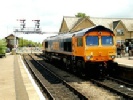


Thursday 27th – Sunday 30th June 2019
© Text & Photos: Stuart Smith
Click Photos for an enlargement
Our 2019 Swiss educational visit started on the Wednesday evening, with a group dinner at The Bahnhof Hotel in Reichenbach im Kandertal. Eight Institution members had journeyed via varying routes to reach this very pleasant location, just south of Spiez on the Gotthard mainline. Exchanging stories, we enjoyed some traditional Swiss food served by our excellent hosts.
Thursday 27th
Our first full day started with breakfast, before boarding the 08:06 regional train to Brig. Travelling on this North-
At Brig, we changed on to another train heading along the Rhône Valley towards Martigny. The weather today was hot already, something we had to cope with all week, as Switzerland, like most of Western Europe was experiencing some very high temperatures. Today’s destination was Emosson-
This is accessed via a metre-

The TTE (Train Touristique d’Emosson) starts adjacent to the small station at Le Châtelard VS, and visitors are required to take no less than three different modes, to reach the summit.
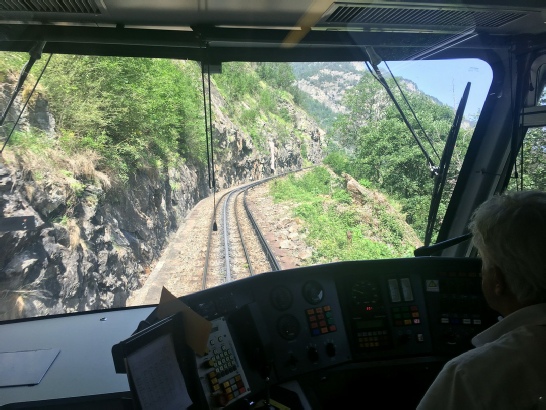
A Drivers eye view aboard our train from Martigny. The rack rail is in the centre, with the third-
The first is a funicular railway which climbs a further 700 metres, hugging the contours of the land as it rises. Here passengers can explore the small expo/museum, which houses a collection of around 50 sets of weighing scales (I’ve no idea what these had to do with the power station or railways in general for that matter?).
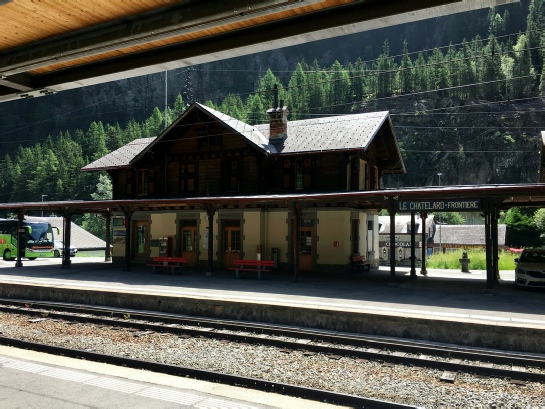
The station at Le Châtelard-
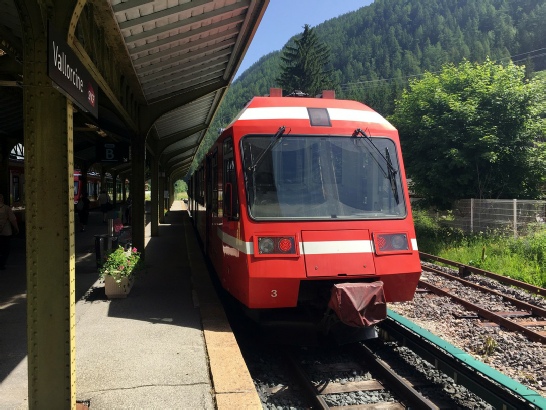
Passports at the ready as we tip-
In addition, this is where passengers transfer to the 2ft gauge train for the 1.7km ride along the mountain ledge. Several tunnels line the route, which gave brief welcome respite from the heat, which hadn’t relented, even by gaining altitude.
The Châtelard Funicular from Le Châtelard to Les Montuires
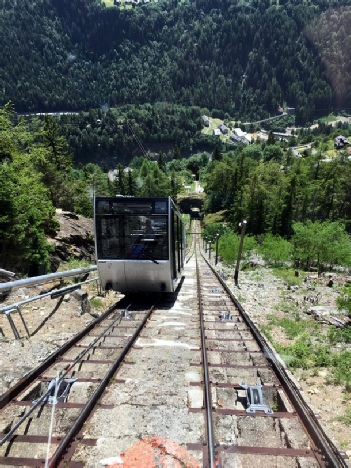
Once off the train, we transferred into the second funicular to reach the highest point at 1930m above sea-
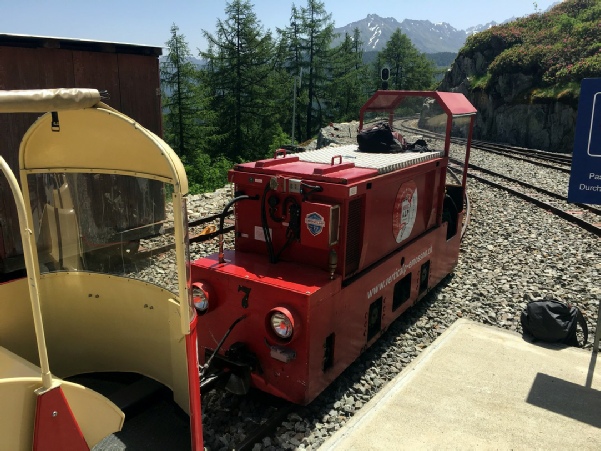
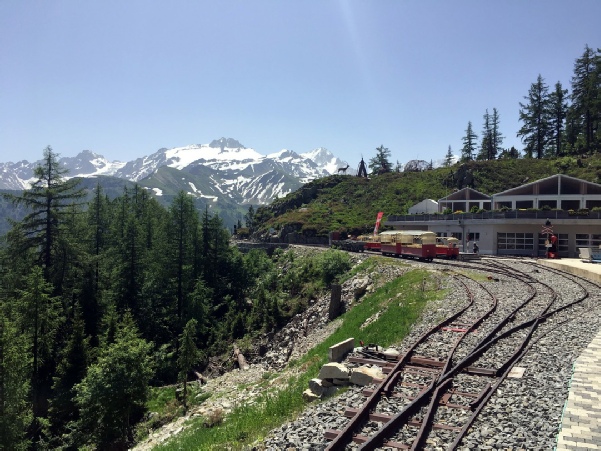
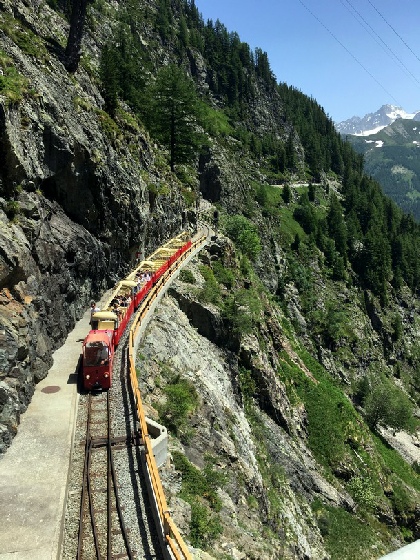
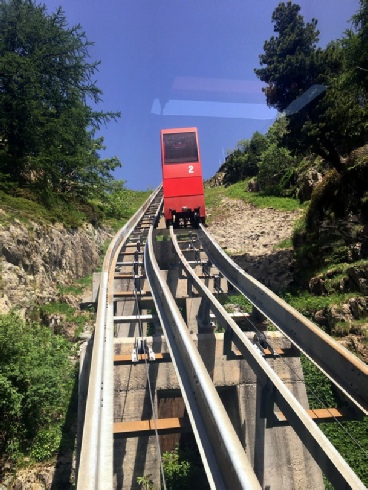
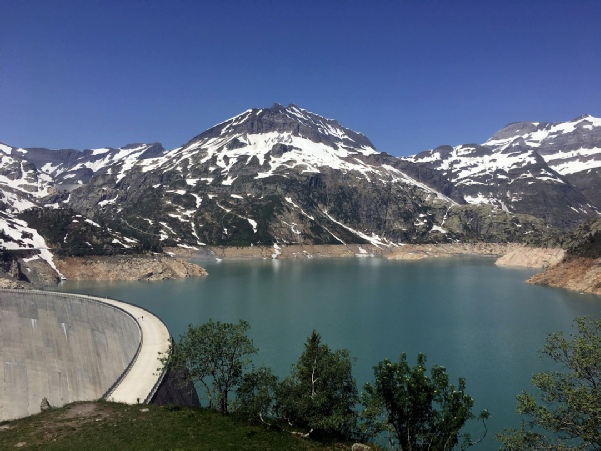
The smaller cable railway to the summit. The cars only held 5 passengers maximum
Back at Le Châtelard, and some serious power lines!
Suitably refreshed, we retraced our journey back down to Le Châtelard, before heading back to Martigny. Whilst some opted to return direct to the hotel, a small group chose to visit the branch-
Friday 28th
Friday was originally planned to be a day of two depot visits, but unfortunately, due to internal issues, the BLS were unable to accommodate us due to extensive depot rebuilding at Spiez, and a vastly increased workload at Bönigen.
Therefore, a short notice plan to visit the newly re-
From what we can gather, the driver on the route was due some form of break in his shift, and no replacement was available, so the bus filled in for one round trip on the short branch.
30 minutes later than planned, we got to ride up to Balsthal, in a former SBB Class 560 emu, which is one of two now operated on this line. At the end of the branch, the track into the station has been slewed, somewhat considerably, since my last trip here in October 2006 with Alan Spencer and Mercia Charters. A few of the group went to have a look around the former goods yard, which now houses several interesting items of historic rolling stock.
During this time, I found some online photographs of my previous visit, and was able to identify the former station location, by way of confirming the old buildings in the area.
Despite being a privately operated branch-
With the temperature rising still, we also used the break here for a welcome ice cream!
Next, it was on to Olten, where we arrived around 12:30. This gave an opportunity for those wanting to grab a quick lunch, before making our way to the nearby SBB Depot.
We were met at the reception area by Andre Cartier (The Kaizen Representative). Those who took part in the visit to Bellinzona Works last year were certainly familiar with the word ‘Kaizen’ (a direct translation from the Japanese word meaning ‘Improvement’).
A year ago, the process was in its infancy with SBB, yet today, it is an everyday word and has become almost second nature to the work force.
The first part of our visit included a fairly in-
The works at Olten is the main centre for SBB, and deals with coaching stock and multiple unit repairs/overhauls, rather than locomotives. Olten is currently part way through a midlife overhaul on the 300 double-
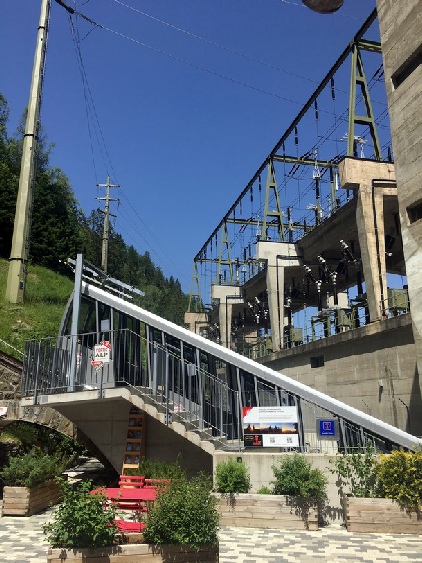
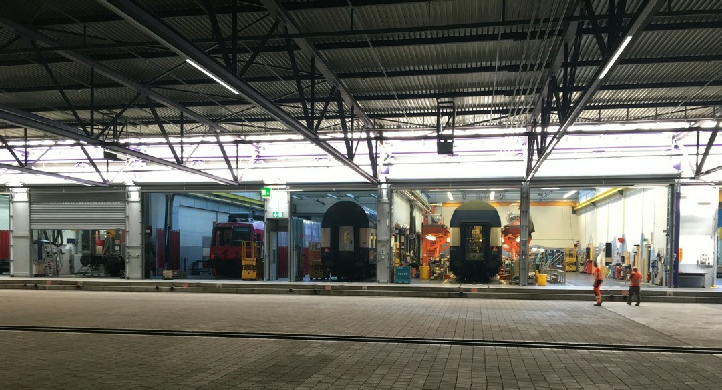
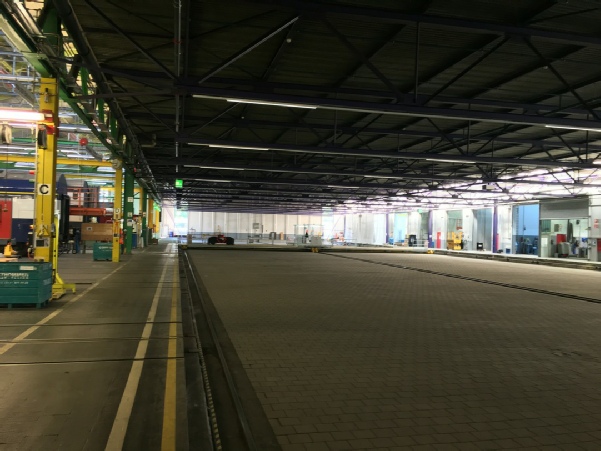
Following our visit, we returned to the station before heading back to Reichenbach, to freshen up and enjoy a drink before dinner.
Views of the Carriage Repair Shops inside Olten Works
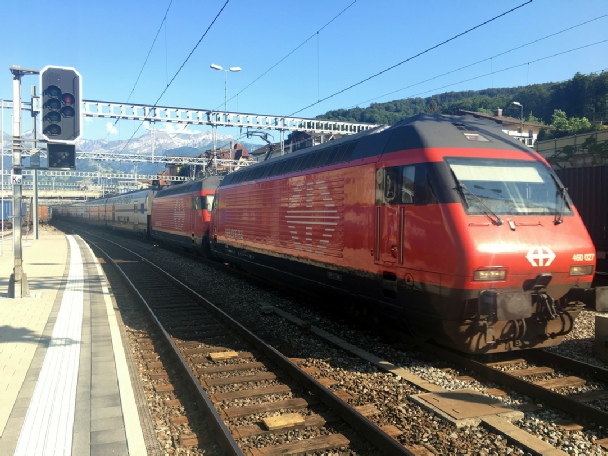
A double-
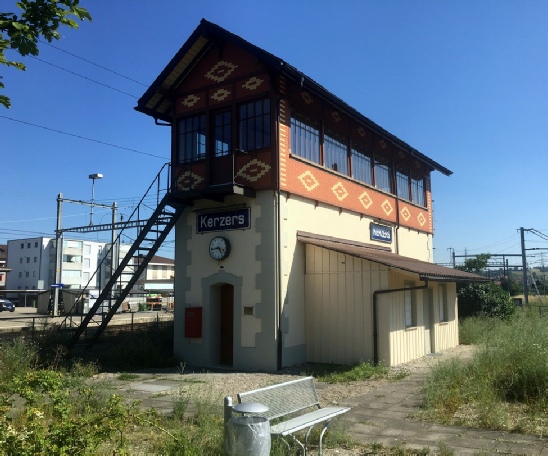
Kerzers. The former signal box which controls a diamond junction layout is now a museum
As usual, we would be having a group evening meal at the hotel, but for tonight, we were welcoming long-
After an excellent meal, we were given a fairly comprehensive lecture on the latest developments from within Switzerland. This included a mention of the new services to be run by BLS – some being transferred from SBB, others being totally new services (something similar to the way privatisation alters the boundaries of franchises and how it decides who operated which trains here in the UK). The ever increasing expansion and popularity of through trains from Domodossola (Italy) to Brig was talked about, and the recent takeover from SBB of car shuttles through the Simplon Tunnel.
A new 6-
Following the conclusion of the lecture, Willi was presented with some gifts from the Institution, in thanks for his time and continued assistance over the years.
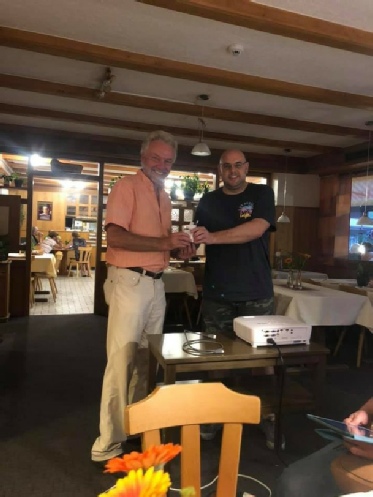
Stuart Smith presents former L&CI Vice-
Saturday 29th
Saturday was effectively a spare day, with members able to choose their own itinerary. However, a few weeks prior to our trip, we got notification of an Open Day at Brig (SBB) Depot. With the weather getting even hotter today, (the forecast was for 39’c in the Rhône Valley), we opted for an early start by train.
To access the depot, a shuttle train service was operating from the loading dock area outside the main station, using an SBB Class 560 EMU. Whilst not in the same style as open days in the UK of yesteryear, there was still a fairly varied assortment of exhibits and rolling stock on show, including two fire rescue trains, a brand new Class 502 EMU, several Re4/4’s and Class 460’s, plus quite a few shunting locos and an assortment of other unusual items.
A second internal shuttle train was giving rides through the newly commissioned train-
Many of the loco cabs were open to visitors too.
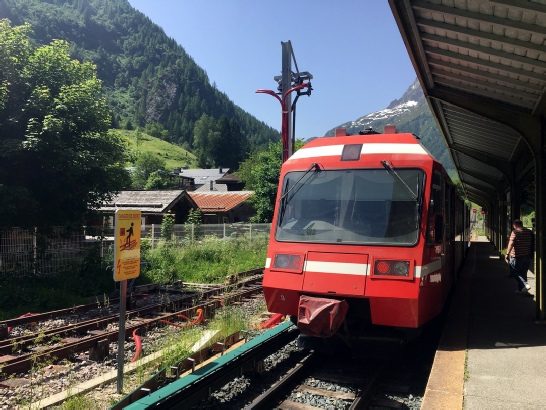
Vallorcine and it’s third-
Passing cars, high above Le Châtelard
The narrow gauge station in stunning scenery
Our small loco for the 1.7km trip to the dam
Lac d’Emosson and the dam
A view of the narrow gauge train running along the cliff ledge
The traverser bed
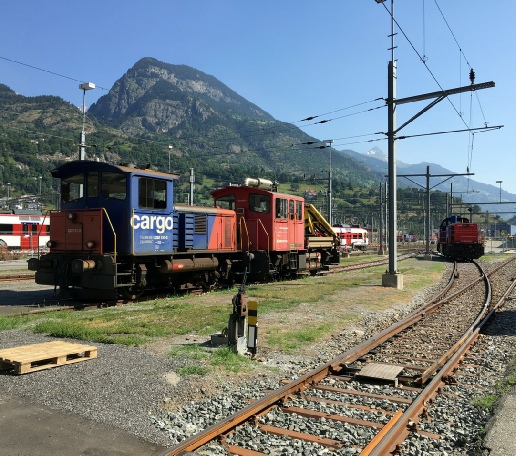
SBB diesel TM’s pose for visitors as part of the Depot Open Day at Brig
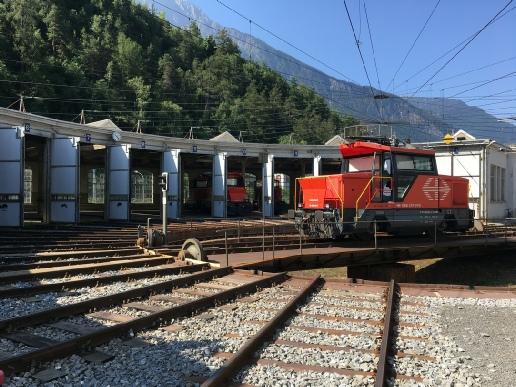
A newly built SBB Class 922 was giving demonstrations on the roundhouse turntable
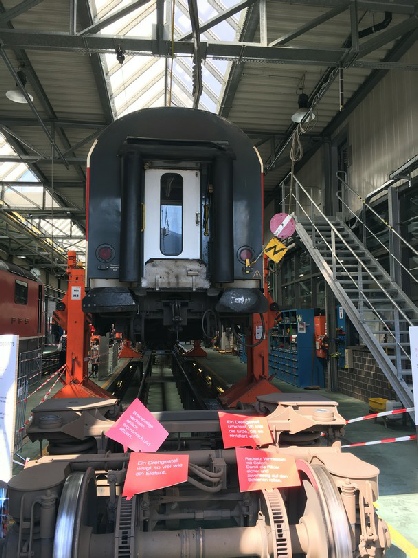
A view of a modern coaching stock vehicle having a bogie change inside Brig Depot
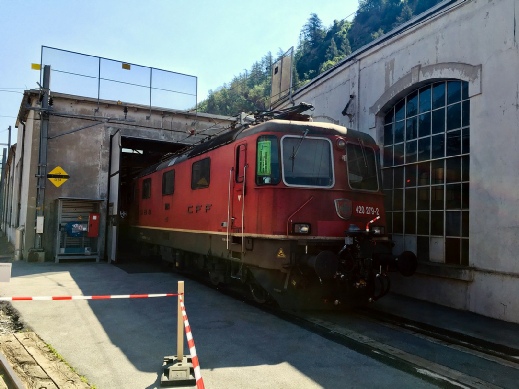
An SBB Class 420
Even if not as informative as our usual ‘organised’ depot visits, the chance to see behind the scenes (with turntable demonstrations and trains being lifted on jacks) at an active depot, was very interesting.
After returning to Brig station, members opted for a range of destinations to amuse themselves during the afternoon. Zermatt, The Reichenbach Falls, a cruise on Lake Thun, Zweisimmen or a trip to the Suhr Valley were some of the locations reached.
A BLS operated Re420 and Mk III coaches on a Zweisimmen to Interlaken Ost service
A view of the gauge-
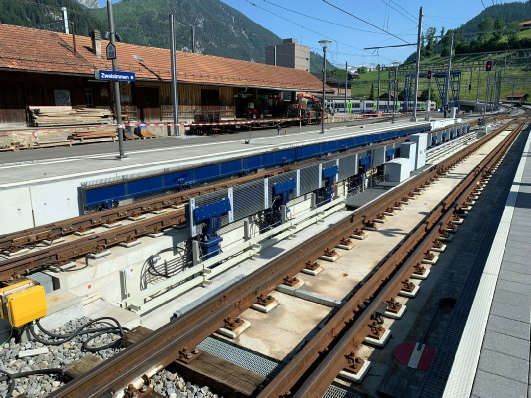
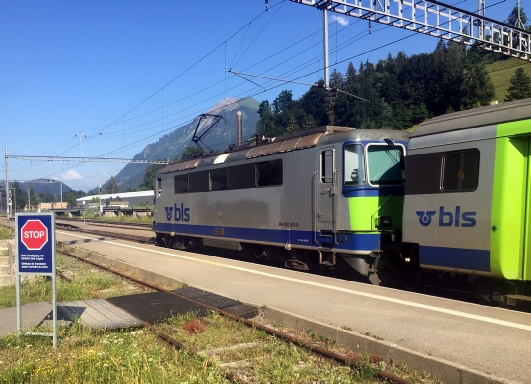
Sunday 30th
Our last full day started by heading direct to Bern, changing into a service for Zürich Hbf.
Here we had time for a quick wander around this impressive station, which used to be all terminus platforms, but has been expanded to include two separate sub-
Walking along the platform ends, we soon encountered a smell of steam in the air!
A few steps further and we saw the remarkable sight of former Uerikon-
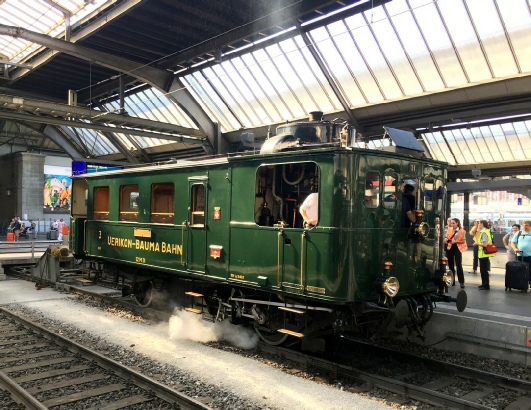
Former Uerikon-
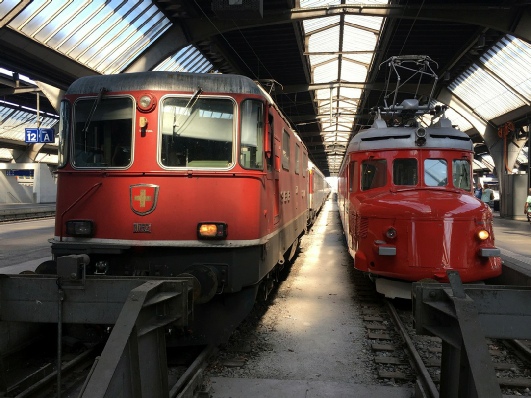
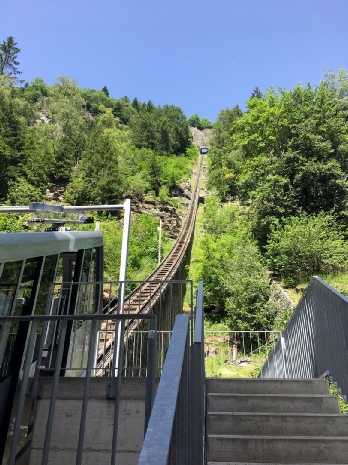
Zürich Hbf was the place to be for heritage rolling stock on this morning, as in an adjacent platform was a former SBB “Churchill” (Red Arrow) railcar, no.1021, dating from 1939.
This was operating a lunchtime circular trip. Amusingly, (although only through translation) was that the platform screens showed it advertised as a “Brunchfahrt”.
Having watched both trains depart, we made our way to the SZU platforms, in order to take the regular service train to Sihlwald.
Despite being only 25minutes end-
Here we were met by Henry Billeter, one of the founding members of the Zürich Museum Bahn (ZMB), and our guide for the day. From talking to Henry throughout the visit, it is clear that without his persistence, passion and enthusiasm from the outset, the railway would clearly not have overcome all the hurdles.
The SZU runs through mostly built up areas south of Zürich, until the last but one station (Langnau-
Upon our arrival, we also met our second host, Thomas König.
The ZMB train was waiting in the adjacent platform, but we still had time to purchase our tickets and take some photographs before boarding. We had been allocated reserved seating in the steam railcar we had seen earlier at Zürich Hbf, which had travelled ahead of us, and now formed part of the train consist.
The train was made up of ZMB steam locomotive E3/3 no.5 “Schnaaggi Schaaggi” (dating from 1899), the steam railcar no.31, two ex-
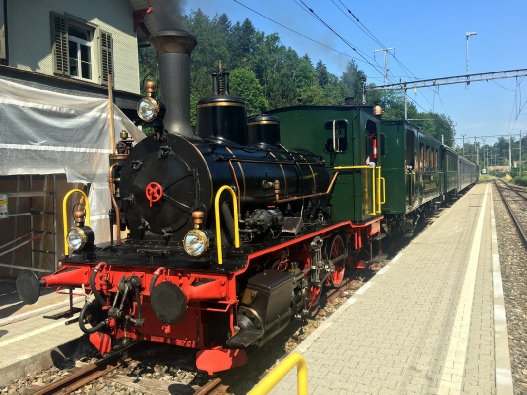
ZMB no.5 “Schnaaggi-
Members of the L&CI were invited to travel in the steam-
The ZMB have running rights over the SZU Network from Sihlwald to Zürich Giesshübel, where they diverge on to their own tracks to terminate at Zürich Wiedikon station.
This section requires the steam hauled services to fit tightly in between the regular passenger service, and over the years a close working relationship has been forged.
Henry openly admits that when the ZMB was founded, and given its initial operating licence (plus a few items of rolling stock), the people at the top of SBB expected them to quickly fail. To this day, they have proved them wrong, running faultlessly and incident free.
Departing back towards Sihlwald, the two steam powered devices on the front made a splendid sound as they powered up through the Manesse Tunnel. Operating only once per month, from April to September, it does seem that even the locals were surprised to see the train passing through the suburbs.
Upon reaching Sihlwald, the train stopped briefly for water, before continuing over the rarely used section of line to Sihlbrugg. The line becoming even more remote by this point, although very picturesque, as it skirts the banks of the River Sihl.
Just prior to reaching Sihlbrugg, the line curves parallel to the SBB route running from Zürich to Luzern & Arth-
A short leg-
Here we were invited guests for lunch. Originally it had been planned to dine in the restaurant car whilst the train was travelling, however in the weeks leading up to our visit, I was informed that an inspection had revealed that the axles had failed an ultrasonic test, and therefore would not be allowed to run over the SZU lines. So, therefore, we would be having lunch in the engine shed -
We were served a delicious three course meal: Swiss salad as a starter, Sliced veal & elbow pasta with apple sauce as the main course, and for dessert, Ice Cream Denmark (a local speciality I believe). This was expertly prepared and served by the staff, one of whom was Walter Huber, who had been my contact throughout the enquiry process leading up to our visit. Even more remarkable, was that the food was prepared inside a former postal wagon, now converted into a kitchen car.
Following our lunch, a short speech was given by Henry to officially welcome us, and thank us for showing interest in their railway. In return, we presented our hosts, (plus the traincrew), with some items of Institution merchandise as a token of our thanks.
We were then given a short guided tour of the carriage and locomotive sheds, where several other items of rolling stock were housed. We opted to ride back to Zürich on the regular SZU electric service, with our two hosts accompanying us for the journey, filling us with more information and stories -
We said our goodbyes, with sincere thanks to all at the ZMB for their hospitality throughout the visit. All that remained was to catch our train back to Reichenbach, where we had a final evening meal together, to conclude another excellent day on the rails.
My sincere thanks to all our hosts over the four days, and to those members who participated in a memorable trip.
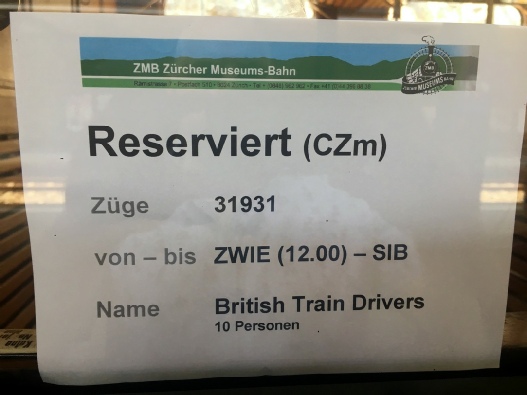
Our reservation label
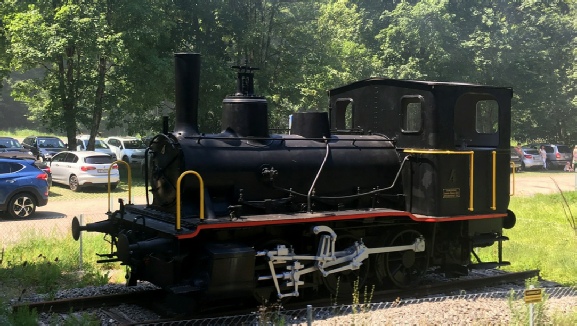
A plinthed steam loco at Sihlwald
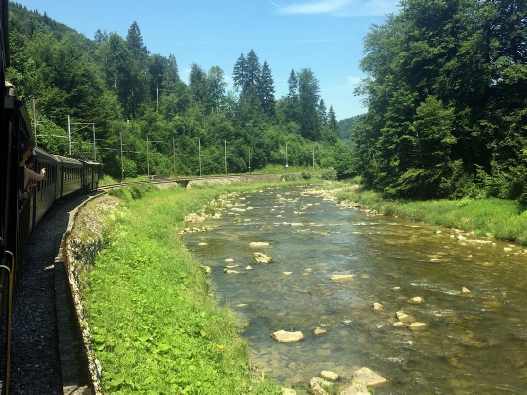
Running alongside the River Sihl between Sihlbrugg and Sihlwald
|
If you have enjoyed reading this web page, you may also be interested in our account of our visit to Switzerland the previous year in 2018. For further details click the button: |
|
|
As well as our previous visit to Switzerland in 2002 |
|
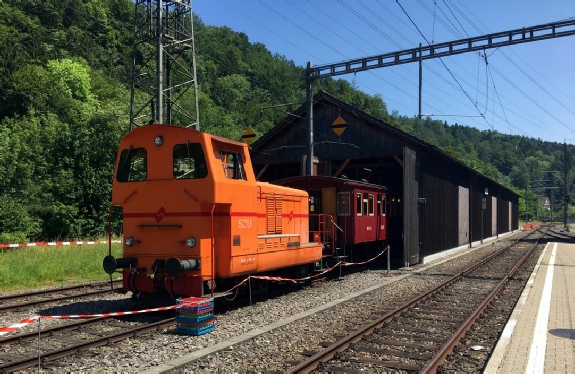
Former SZU shunt tractor (236 507) is now operated by the ZMB.
The L&CI group (along with our two hosts) enjoy a sumptuous lunch inside the carriage shed at Sihlwald
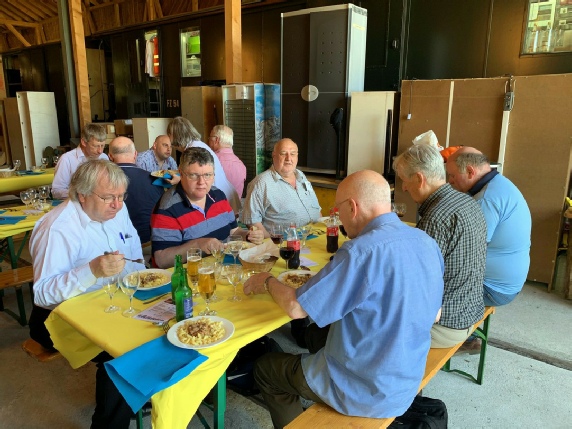 Switzerland 2002
Switzerland 2002